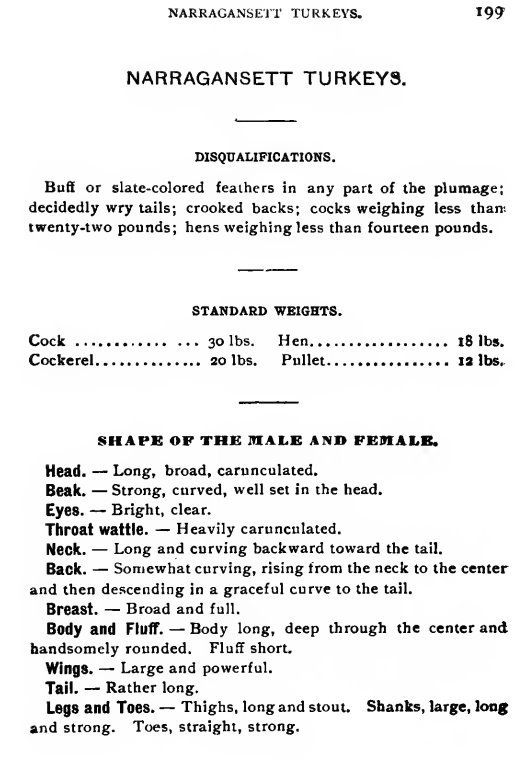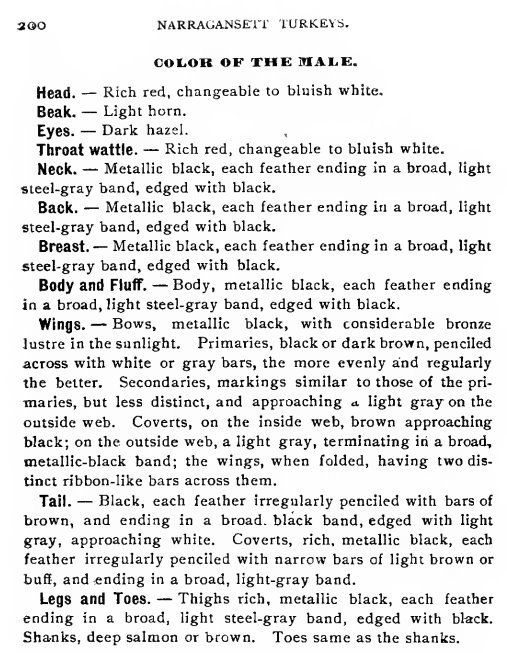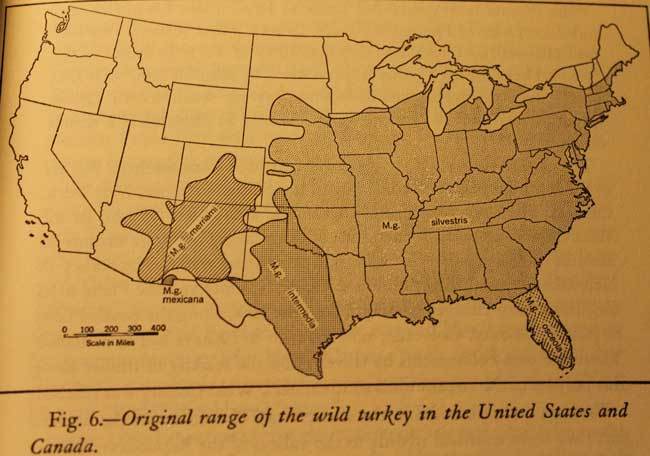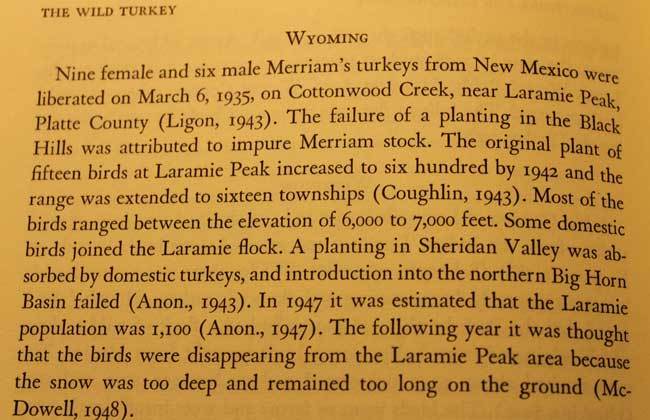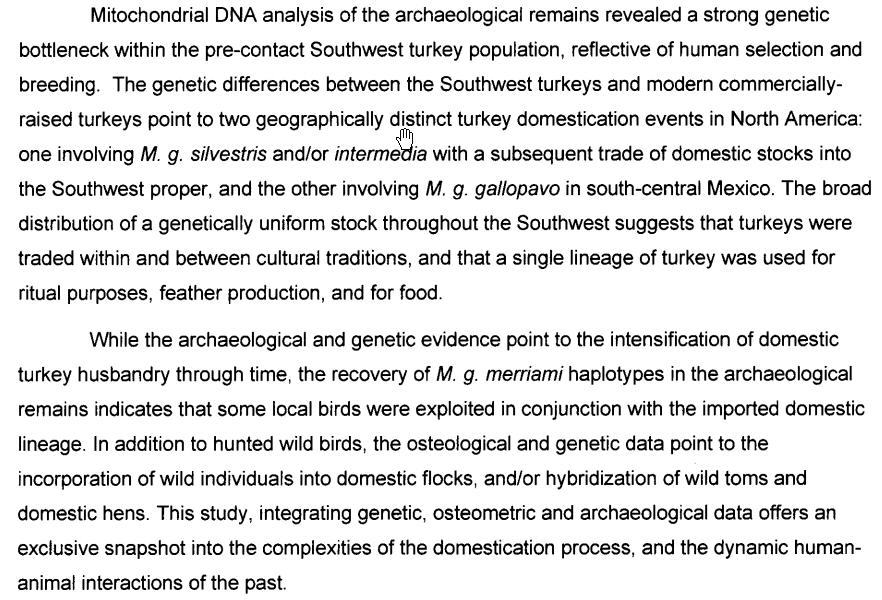Wyoming lifts ban on Narragansett Turkeys! 11/22/2011 See below:
From LaDonna:
==============
Yippee! WY G&F will now allow Narragansett turkeys in the state!
A HUGE THANK YOU to everyone who wrote letters, e-mailed and sent me information. You were great and made a difference!
LaDonna
--------------------------------------------------------------------------------
Date: Tue, 22 Nov 2011 17:48:43 -0700
Subject: Narragansett Turkeys
From: [email protected]
To: [email protected]
CC: [email protected]; [email protected]; [email protected]
LaDonna,
It was a pleasure to visit with you about this issue on the phone this evening. As we discussed, the Wyoming Game and Fish Commission regulations, chapter 10, state that domestic turkeys that are "distinguished morphologically from wild turkeys" qualify as domestic turkeys and do not require a permit for possession. Narragansett turkeys that display these characteristics would not require a permit for possession.
Please let me know if you have further questions.
Brian Nesvik
Wyoming Game and Fish Department
Chief Game Warden
Chief, Wildlife Division
[email protected]
307-777-4579
E-Mail to and from me, in connection with the transaction
of public business,is subject to the Wyoming Public Records
Act, and may be disclosed to third parties.
=============================
Wyoming bans all turkeys that are related to wild turkeys
(ETA: Note, at present only the Narragansett is banned. However, based on their policy, ALL turkeys would be banned.)
The below letter was received by the Secretary of the Exhibition Turkey Fanciers. Please read the letter then read this link at ALBC: http://www.albc-usa.org/cpl/narragansett.html
Then assist us in helping fellow breeders of poultry in Wyoming. Call the Wyoming Game and Fish Department and ask for Director Scott Talbott. Explain to him that the Narragansett Turkey has been recognized as a domesticated livestock for over 400 years. You may file a formal online complaint at http://gf.state.wy.us/wildlife/enforcement/stoppoaching/submitTip.aspx
Then call the Wyomings Governor Matthew Mead at 307-777-7434 and explain to his office that the Narragansett Turkey has been recognized as a domesticated livestock for over 400 years. You may email the Governor at http://governor.wy.gov/contactus/Pages/default.aspx
We must protect our rights to own livestock. Arkansas Game and Fish attempted a similar ban this year concerning ALL waterfowl. We won! Now Wyoming Game and Fish. What state is next?
The ETF appreciates your assistance.
Jim A. Hall
Secretary
Exhibition Turkey Fanciers
Note: We will place updates in post #1 and on the thread.
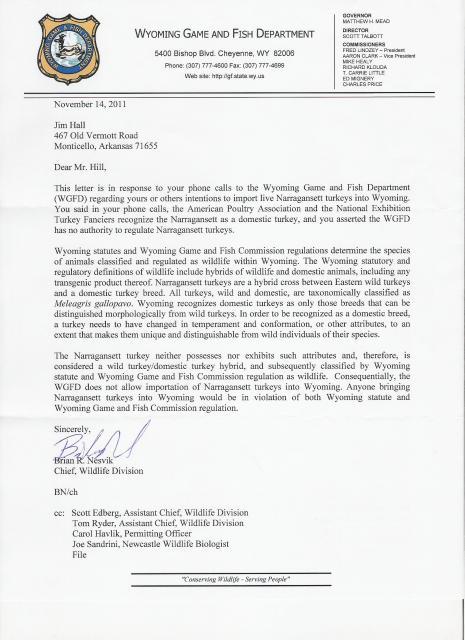
Here is the Grand Champion Turkey at the 2011 Crossroads of American Joint National, a Narragansett tom.
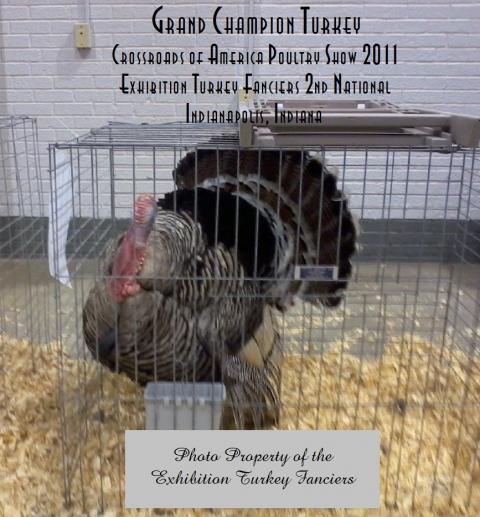
From LaDonna:
==============
Yippee! WY G&F will now allow Narragansett turkeys in the state!
A HUGE THANK YOU to everyone who wrote letters, e-mailed and sent me information. You were great and made a difference!
LaDonna
--------------------------------------------------------------------------------
Date: Tue, 22 Nov 2011 17:48:43 -0700
Subject: Narragansett Turkeys
From: [email protected]
To: [email protected]
CC: [email protected]; [email protected]; [email protected]
LaDonna,
It was a pleasure to visit with you about this issue on the phone this evening. As we discussed, the Wyoming Game and Fish Commission regulations, chapter 10, state that domestic turkeys that are "distinguished morphologically from wild turkeys" qualify as domestic turkeys and do not require a permit for possession. Narragansett turkeys that display these characteristics would not require a permit for possession.
Please let me know if you have further questions.
Brian Nesvik
Wyoming Game and Fish Department
Chief Game Warden
Chief, Wildlife Division
[email protected]
307-777-4579
E-Mail to and from me, in connection with the transaction
of public business,is subject to the Wyoming Public Records
Act, and may be disclosed to third parties.
=============================
Wyoming bans all turkeys that are related to wild turkeys
(ETA: Note, at present only the Narragansett is banned. However, based on their policy, ALL turkeys would be banned.)
The below letter was received by the Secretary of the Exhibition Turkey Fanciers. Please read the letter then read this link at ALBC: http://www.albc-usa.org/cpl/narragansett.html
Then assist us in helping fellow breeders of poultry in Wyoming. Call the Wyoming Game and Fish Department and ask for Director Scott Talbott. Explain to him that the Narragansett Turkey has been recognized as a domesticated livestock for over 400 years. You may file a formal online complaint at http://gf.state.wy.us/wildlife/enforcement/stoppoaching/submitTip.aspx
Then call the Wyomings Governor Matthew Mead at 307-777-7434 and explain to his office that the Narragansett Turkey has been recognized as a domesticated livestock for over 400 years. You may email the Governor at http://governor.wy.gov/contactus/Pages/default.aspx
We must protect our rights to own livestock. Arkansas Game and Fish attempted a similar ban this year concerning ALL waterfowl. We won! Now Wyoming Game and Fish. What state is next?
The ETF appreciates your assistance.
Jim A. Hall
Secretary
Exhibition Turkey Fanciers
Note: We will place updates in post #1 and on the thread.

Here is the Grand Champion Turkey at the 2011 Crossroads of American Joint National, a Narragansett tom.

Last edited:




